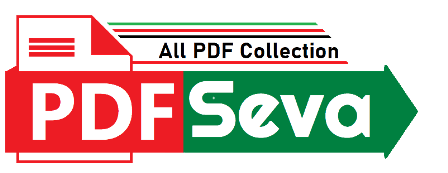
ad here
698 Download
1 year ago
When it comes to building or renovating a residential property, the specifications are the blueprint for ensuring that the end result meets the desired standards of quality, safety, and functionality. Residential building specifications outline the materials, construction methods, and finishing details that will be employed in the construction process. In this comprehensive guide, we will explore the key elements of residential building specifications, their importance, and how they contribute to creating a home that is not only aesthetically pleasing but also built to last.
1. The Foundation: Ensuring Stability and Durability
The foundation of a residential building is the literal and metaphorical base upon which the entire structure rests. Specifications for the foundation include details about the type of foundation to be used, whether it’s a slab, crawl space, or basement. It will also specify the materials for the foundation walls, such as concrete or treated wood, and any reinforcing elements like steel bars.
In regions prone to seismic activity, additional specifications for earthquake-resistant foundations may be included. The goal is to ensure that the foundation is solid, able to bear the weight of the structure, and resistant to the elements it will face over time.
2. Structural Framework: Building a Solid Skeleton
The structural framework of a residential building is like its skeleton, providing support and shape. Specifications for the structural framework detail the type of materials to be used for the framing, such as wood or steel, and the design standards that must be followed.
This section also covers elements like load-bearing walls, beams, and columns. The specifications will outline the size, spacing, and placement of these components to ensure they meet engineering standards for safety and stability.
3. Exterior Finishes: Aesthetic Appeal and Protection
The exterior finishes of a residential building contribute significantly to its curb appeal and protection against the elements. Specifications for exterior finishes encompass details about the type of siding, roofing materials, and exterior paint or coatings.
For example, specifications might specify the use of weather-resistant materials like vinyl or fiber cement for siding, asphalt shingles or metal for roofing, and a specific type of exterior paint that is durable and resistant to fading. Properly specified exterior finishes not only enhance the visual appeal of a home but also contribute to its longevity and weather resistance.
4. Windows and Doors: Balancing Light, Ventilation, and Security
Windows and doors play a crucial role in providing natural light, ventilation, and security to a residential property. Specifications for windows and doors include details about the materials, size, and energy efficiency standards.
Read More: Double Bedroom 4th Phase List Telangana Phase 2 PDF
For windows, specifications may cover aspects such as the type of glass, frame materials (aluminum, vinyl, or wood), and energy efficiency ratings. Door specifications will include details about the material (wood, fiberglass, or steel), security features, and hardware finishes.
5. Interior Finishes: Creating Comfortable and Stylish Spaces
Interior finishes transform a house into a home, adding warmth, style, and functionality to the living spaces. Residential building specifications for interiors cover a wide range of elements, including:
6. Heating, Ventilation, and Air Conditioning (HVAC): Ensuring Comfort and Energy Efficiency
Residential building specifications for HVAC systems are essential for creating a comfortable indoor environment and ensuring energy efficiency. This section includes details about the type of heating and cooling systems, ventilation requirements, and energy efficiency standards.
For heating, specifications may cover the type of system (e.g., forced-air, radiant), the energy source (gas, electric, solar), and any additional features like programmable thermostats. Similarly, specifications for air conditioning detail the type of system, energy efficiency ratings, and cooling capacity.
Ventilation specifications address the need for fresh air circulation, outlining the design and installation of ventilation systems, including exhaust fans and air exchange rates.
7. Insulation and Energy Efficiency: Building for the Future
In an era of increasing environmental awareness, residential building specifications often include stringent requirements for insulation and overall energy efficiency. This section outlines the type and thickness of insulation materials to be used in walls, ceilings, and floors.
Energy-efficient windows and doors may be specified to minimize heat loss or gain. The specifications may also include requirements for sealing gaps and ensuring the airtightness of the building envelope.
8. Sustainability and Eco-Friendly Practices: Building Responsibly
With a growing focus on sustainable and eco-friendly building practices, residential building specifications may include guidelines for incorporating green elements into the construction process. This can include:
9. Compliance with Building Codes and Regulations: Ensuring Safety and Legal Compliance
Perhaps one of the most critical aspects of residential building specifications is their alignment with local building codes and regulations. Building codes are in place to ensure the safety and structural integrity of residential properties. Specifications must adhere to these codes, covering aspects such as:
10. Quality Assurance and Warranty Information: Building with Confidence
Residential building specifications often include details about quality assurance measures and warranty information. This may cover the quality standards to which the construction will adhere, including inspections at various stages of the building process.
Warranty information outlines the coverage provided by the builder for defects or issues that may arise after the completion of the construction. This section provides homeowners with confidence in the longevity and durability of their investment.
Conclusion: Crafting Homes with Precision and Care
In conclusion, residential building specifications serve as the guiding document for turning architectural plans into tangible, livable homes. They encompass a wide range of details, from the foundational elements that provide stability to the aesthetic finishes that make a house a home. By paying careful attention to these specifications, builders and homeowners alike can ensure that the residential property meets high standards of quality, safety, and sustainability. As the construction industry continues to evolve, residential building specifications play a crucial role in shaping the future of housing, offering a roadmap for creating homes that are not only structurally sound but also aligned with the values of comfort, efficiency, and environmental responsibility.
| PDF Name: | Residential-Building-Specifications |
| Author : | LatestPDF |
| File Size : | 45 kB |
| PDF View : | 49 Total |
| Downloads : | 📥 Free Downloads |
| Details : | Free PDF for Best High Quality Residential-Building-Specifications to Personalize Your Phone. |
| File Info: | This Page PDF Free Download, View, Read Online And Download / Print This File File At PDFSeva.com |
Copyright/DMCA: We DO NOT own any copyrights of this PDF File. This Residential Building Specifications PDF Free Download was either uploaded by our users @LatestPDF or it must be readily available on various places on public domains and in fair use format. as FREE download. Use For education proposal. If you want this Residential Building Specifications to be removed or if it is copyright infringement, do drop us an email at [email protected] and this will be taken down within 24 hours!
© PDFSeva.com : Official PDF Site : All rights reserved
